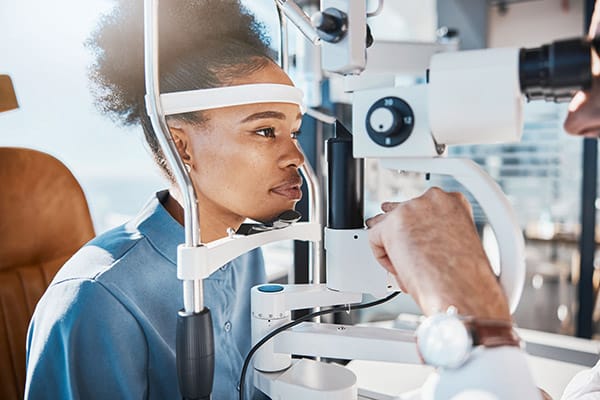Eye Exams

A complete eye exam is a test of your total visual function. It begins with a check of your visual acuity, often without glasses and with them (if you have them). The measurement of your prescription power (or refraction) will determine your best-corrected vision and can be written as a prescription for glasses. After this step, some of the neurological functions of your eye are tested: pupil reaction, eye movement, eye alignment, and side vision. Occasionally, the functions of your lids and other facial muscles and nerves are examined. Any abnormalities of your lids and eye position may be also be measured.
The eyes themselves are examined at the slit lamp, which illuminates and magnifies the smaller structures of the eye. The pressure of the eye is also measured after numbing the eyes with short-acting anesthetic drops. Dilating drops are then instilled to dilate the pupil and allow a better examination of the crystalline lens and the inside of the eye (the fundus). The fundus is the back portion of the eye, which includes the retina, optic nerve head (optic disc), macula and fovea.
The fundus is examined using two different instruments. The direct ophthalmoscope is a headlight that is used with a hand lens to get a macro view of the fundus and to see the edges of the retina (the nerve layer in the eye responsible for vision). The slit lamp is also used to view the retina in higher magnification and in stereo to better see any abnormalities.
How often should I have my eyes examined?
It is recommended that children get eye exams at age 6 months, 6 years and around the time they begin to drive. Children with known refractive errors or eye diseases will get exams more frequently, often yearly. Young adults can get exams every 2 to 5 years unless a change in glasses is needed or another problem is detected. At age 55 it is recommended to increase the frequency of exams every 2-3 years because both glaucoma and cataracts become more prevalent as patients age. At age 65 yearly exams are recommended because cataracts and glaucoma become even more frequent and some other problems begin to arise. Diabetics of any age should get yearly exams to detect any problems as early as possible.

